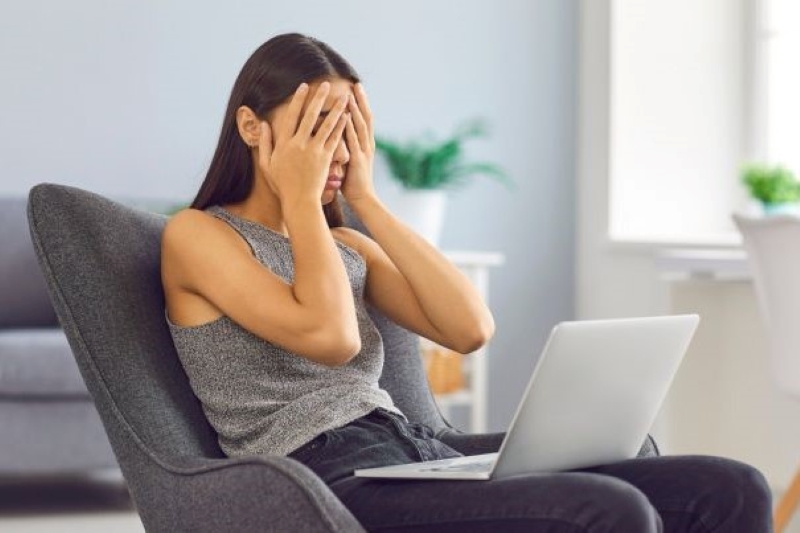
Pharmacological treatment of anxiety: the flip side of benzodiazepines
Let’s talk benzodiazepines: anxiety is one of the most widespread psychological problems in modern society, given the numerous demands to which we are called upon to respond every day
These stresses have a different impact on individuals, depending on their biological temperament, stress factors and unpleasant past experiences during childhood that hinder their ability to regulate their emotional states as adults.
This is why benzodiazepines (bdz), or minor tranquillisers, mainly used for the short-term treatment of anxiety and insomnia, are widely sold drugs.
Benzodiazepines: pros and cons
Benzodiazepines fall into the category of central nervous system depressants and thus have a calming and sedative action.
While there is no denying the fact that benzodiazepines have the merit of making perception of reality less dangerous or perhaps improving the quality and duration of sleep, it is true that they do have their limitations, that of inducing a mechanism of dependence and addiction.
The latter takes place especially when the use of such drugs is prolonged, which is why benzodiazepines should be used for limited periods.
The brain also accurately registers the experience of the initial rapid effect and this would mean that even when it ceases, the person still feels the need to take the drug again if necessary.
It has been observed that even those who have benefited from different molecules for the treatment of anxiety symptoms would resort to benzodiazepines again at the time of relapse.
Once the use of benzodiazepines is discontinued, unpleasant side effects such as
- stupor combined with nervousness
- aggressiveness
- feeling of threat
- unpleasant increase in sensory perception
The behaviour of the benzodiazepine addict has often been the subject of study, and it has been observed that abusers tend to take much higher doses than the initial ones and sometimes combine them with other psychotropic substances or alcohol (8 out of 10).
There are a number of factors that would increase the risk of developing addiction to benzodiazepines, among them:
The duration of treatment and the size of the doses taken
- The type of benzodiazepine used
- The use of rapid-release preparations
In view of the high risk of developing dependence on benzodiazepines by patients suffering from anxiety symptoms, safety measures have been taken, including the inclusion of certain molecules in special tables: in this case, prescriptions for the drug, being non-repeatable and having limited validity, would not allow the patient to obtain new prescriptions without having been seen again by the doctor.
Conclusions
Benzodiazepines are a decidedly useful class of drugs in the treatment of anxiety disorders and insomnia, however it should not be overlooked that such molecules can in some cases induce unpleasant mechanisms of addiction and dependence.
It is also for this reason that it is important to combine drug therapy with a course of psychotherapy that can provide the patient with effective tools, free of side effects.
References
Read Also
Emergency Live Even More…Live: Download The New Free App Of Your Newspaper For IOS And Android
Anxiety And Allergy Symptoms: What Link Does Stress Determine?
Panic Attacks: Do Psychotropic Drugs Solve The Problem?
Panic Attacks: Symptoms, Causes And Treatment
First Aid: How To Deal With Panic Attacks
Panic Attack Disorder: Feeling Of Imminent Death And Anguish
Panic Attacks: Symptoms And Treatment Of The Most Common Anxiety Disorder
Anxiety And Allergy Symptoms: What Link Does Stress Determine?
Eco-Anxiety: The Effects Of Climate Change On Mental Health
Separation Anxiety: Symptoms And Treatment
Anxiety, When Does A Normal Reaction To Stress Become Pathological?
Anxiety: The Seven Warning Signs
Physical And Mental Health: What Are Stress-Related Problems?
Gaslighting: What Is It And How To Recognise It?
Eco Anxiety Or Climate Anxiety: What It Is And How To Recognize It
Stress And Sympathy: What Link?
Pathological Anxiety And Panic Attacks: A Common Disorder
Panic Attack Patient: How To Manage Panic Attacks?
Depression: Symptoms, Causes And Treatment
Cyclothymia: Symptoms And Treatment Of Cyclothymic Disorder
Dysthymia: Symptoms And Treatment
Bipolar Disorder (Bipolarism): Symptoms And Treatment
Everything You Need To Know About Bipolar Disorder
Drugs To Treat Bipolar Disorder
What Triggers Bipolar Disorder? What Are The Causes And What Are The Symptoms?
Depression, Symptoms And Treatment
Narcissistic Personality Disorder: Identifying, Diagnosing And Treating A Narcissist
Intermittent Explosive Disorder (IED): What It Is And How To Treat It
Baby Blues, What It Is And Why It Is Different From Postpartum Depression
Depression In The Elderly: Causes, Symptoms And Treatment
6 Ways To Emotionally Support Someone With Depression
Defusing Among First Responders: How To Manage The Sense Of Guilt?
Paranoid Personality Disorder: General Framework
The Developmental Trajectories Of Paranoid Personality Disorder (PDD)
Reactive Depression: What It Is, Symptoms And Treatments For Situational Depression
Facebook, Social Media Addiction And Narcissistic Personality Traits
Social And Exclusion Phobia: What Is FOMO (Fear Of Missing Out)?
Gaslighting: What Is It And How To Recognise It?
Nomophobia, An Unrecognised Mental Disorder: Smartphone Addiction
The Panic Attack And Its Characteristics
Psychosis Is Not Psychopathy: Differences In Symptoms, Diagnosis And Treatment
Metropolitan Police Launches A Video Campaign To Raise Awareness Of Domestic Abuse
Metropolitan Police Launches A Video Campaign To Raise Awareness Of Domestic Abuse
World Women’s Day Must Face Some Disturbing Reality. First Of All, Sexual Abuse In Pacific Regions
Child Abuse And Maltreatment: How To Diagnose, How To Intervene
Child Abuse: What It Is, How To Recognise It And How To Intervene. Overview Of Child Maltreatment
Does Your Child Suffer From Autism? The First Signs To Understand Him And How To Deal With Him
Rescuer Safety: Rates Of PTSD (Post-Traumatic Stress Disorder) In Firefighters
PTSD Alone Didn’t Increase Heart Disease Risk In Veterans With Post-Traumatic Stress Disorder
Post-Traumatic Stress Disorder: Definition, Symptoms, Diagnosis And Treatment
PTSD: First responders find themselves into Daniel artworks
Dealing With PTSD After A Terroristic Attack: How To Treat A Post Traumatic Stress Disorder?
Surviving death – A doctor revived after attempting suicide
Higher risk of stroke for veterans with mental health disorders


